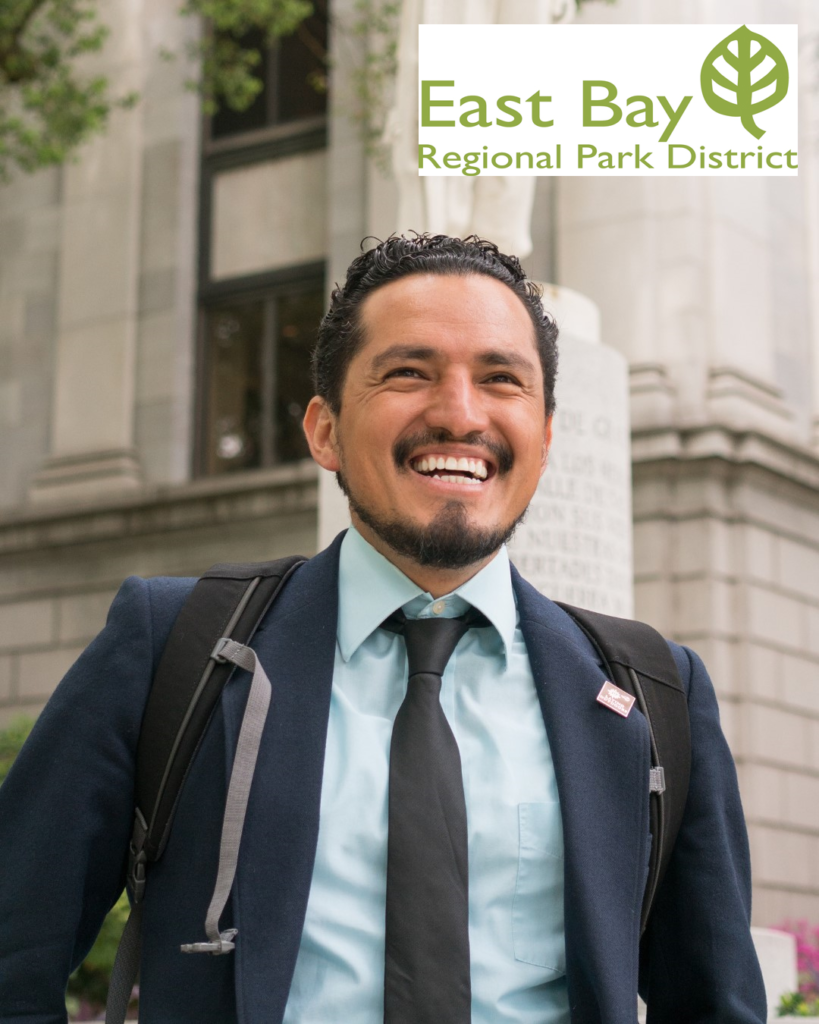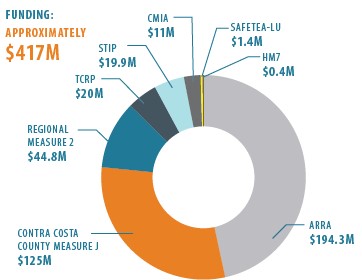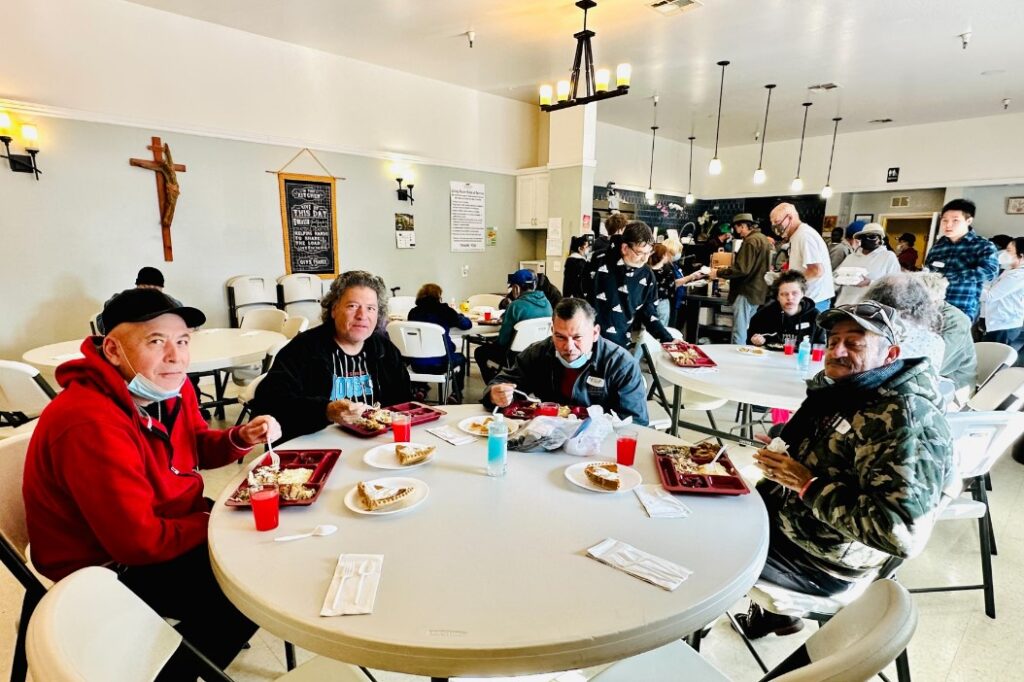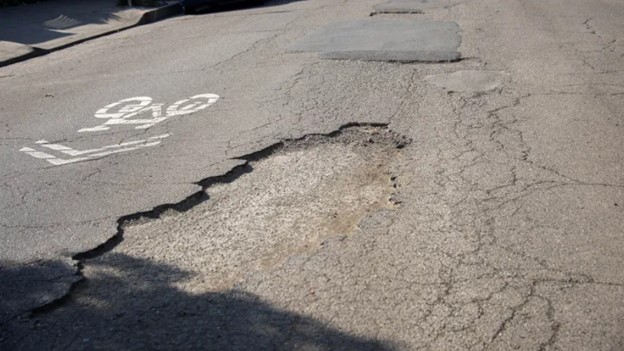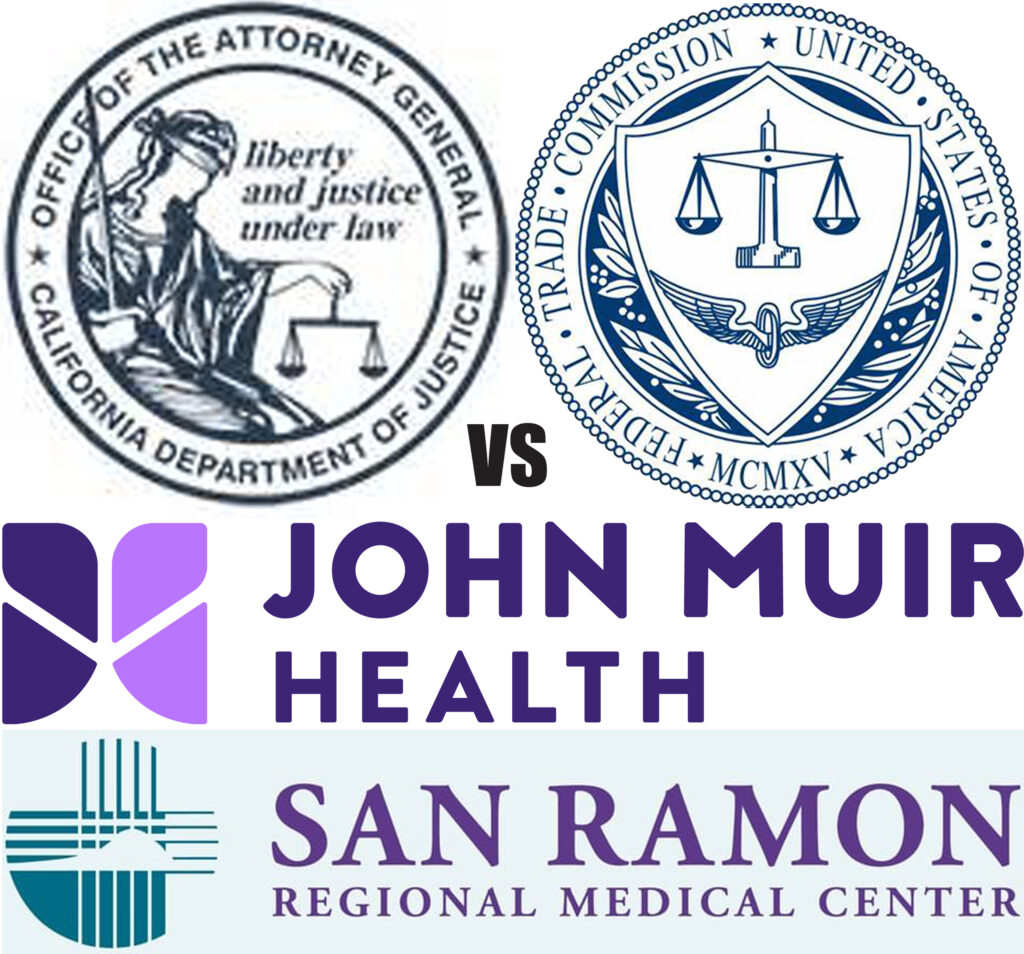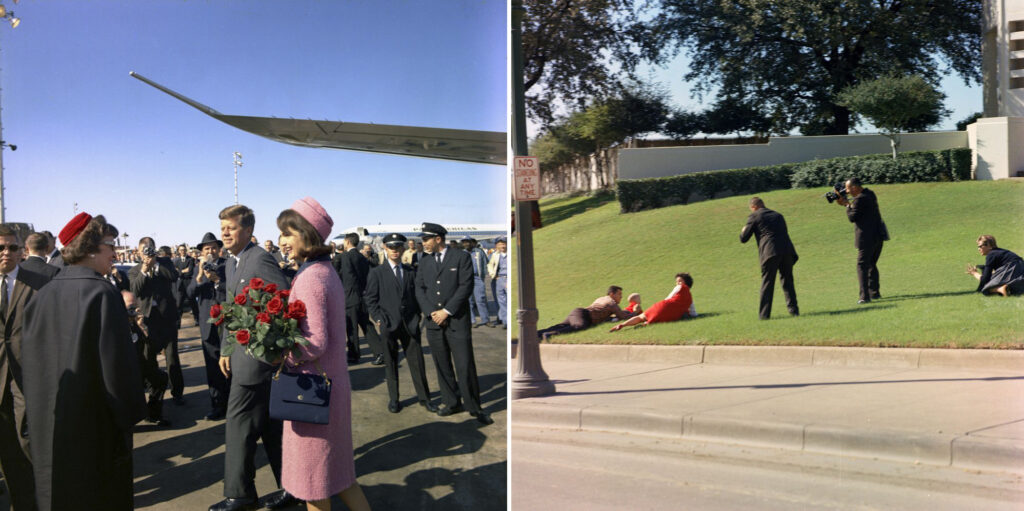
(Left) President John F. Kennedy and First Lady Jacqueline Kennedy arrive at Love Field, Dallas, Texas. (Right) Witnesses lay down in the grass immediately following the assassination of President John F. Kennedy. Bill and Gayle Newman cover their children, Clayton and Billy (hidden) at left. Photographers, including White House Motion Picture Photographer, Lieutenant Thomas M. Atkins (right), film in center. Dealey Plaza, Dallas, Texas. Credit: Cecil Stoughton. White House Photographs. John F. Kennedy Presidential Library and Museum, Boston
By Allen D. Payton, Publisher
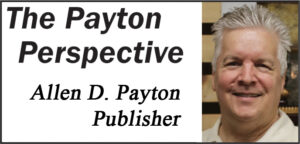 While I usually focus on matters in Antioch and Contra Costa County, on this 60th anniversary of the assassination of President John F. Kennedy, I’m compelled to share my thoughts and views.
While I usually focus on matters in Antioch and Contra Costa County, on this 60th anniversary of the assassination of President John F. Kennedy, I’m compelled to share my thoughts and views.
That’s because, for all of my life, the government has been lying to us about his assassination on November 22, 1963 and it angers me to this day that we, the American people, still don’t know everything about it, the facts and truth. I was born just five-and-a-half months before and I’ve always felt a connection to him, even though as a baby I knew nothing about JFK, his presidency, policies or life, I’ve taken it upon myself to read and learn about him and that fateful day in American history.
I’m angered by JFK’s assassination, which was clearly a conspiracy, as well as the ensuing coverup and whitewash of the Warren Commission Report. They’ve tried to tell us there was a single gunman, Lee Harvey Oswald had acted alone, and a single, pristine bullet tore through both Kennedy and Governor John Connally’s bodies. But the testimony of so many eyewitnesses, many of whom were ignored by the commission and excluded from its report, has told us otherwise.

Views of the grassy knoll, the rail line and triple underpass to the west in Dallas’ Dealey Plaza from the seventh floor of the Texas School Book Depository building on Dec. 11, 2020. Photos by Allen D. Payton
A few years ago, my mother and I flew into Dallas to attend my youngest niece’s wedding, and I made it a point, for the first time, to visit Dealey Plaza, the site of the horrible event, as well as the Sixth Floor Museum of the School Book Depository building. I toured, saw the displays, watched and listened to the videos and found it most interesting that the southwest corner windows were covered with black shades preventing people from looking down upon the infamous grassy knoll. It’s as if they don’t want folks to question the official narrative. So, my mom and I went upstairs to the seventh floor where events are held, walk to the corner and lift the shades to look down upon the place where it’s clear the kill shot was taken.
While there, I also stood in the middle of Elm Street on the X on the ground marking the location where Kennedy was riding in the presidential limousine when he was struck by the gunfire. I looked up at both the corner of the Sixth Floor perch of at least one gunman, and over to the grassy knoll and fence above it that still stands to this day.

Views of the Texas Book Depository building from and of the second X on Elm Street, and the grassy knoll and fence on Dec. 11, 2020. Photos by Allen D. Payton
I walked to the back of the fence that so many people, including a few police officers, ran towards, after at least four shots were fired – including one that struck the front window of the limousine. That fence is the location where people said they saw a puff of smoke rise under the trees and at least one witness said he saw a man take apart a rifle and hand it off to another man in a suit who quickly walked away. As I stood there, as one of my sisters and my eldest niece, who had arrived and joined me in Dealey Plaza, stood nearby, I was moved by emotion realizing that was the place where our president’s life was taken with the fatal headshot. That emotion turned to anger.
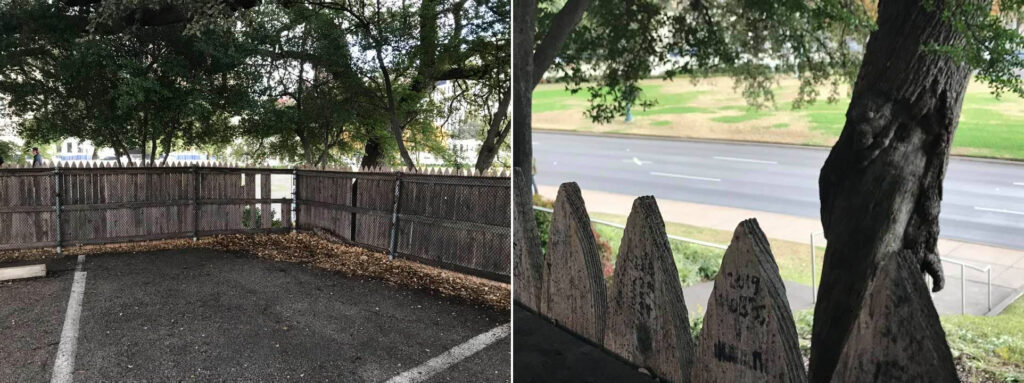
Views from behind the fence atop the grassy knoll in Dallas’ Dealey Plaza and the second X on Elm Street on Dec. 11, 2020. Photos by Allen D. Payton
Whose president do the powers that be think he was? Whose government do they think this is? We the people, that’s who! For too long, too many have sat idly by and allowed them to lie to us, cover up their evil deeds and hope we’ll all just go on with our lives – which is what has happened – and maybe even forget. But I won’t. Many people won’t. While I applaud former President Trump for releasing most of the remaining JFK Assassination records, he failed to fulfill his promise to release them all.
As a November 21, 2018 report on History.com reads, “…despite the 25-year deadline established by the 1992 JFK Records Collection Act, not everything came out. Citing national security concerns, President Trump then elected to halt the release of some of the remaining classified files for an additional six months. Now that deadline has passed, and it’s still unclear how many records (or portions of the records) still remain under wraps, whether they will be ever released in full, and what—if any—new information they may contain.”
At that time, sources estimated “some 21,980 documents, totaling more than 368,000 pages, are still being withheld in full or in part” and “through a request under the Freedom of Information Act (FOIA), the (National) Archives itself put the total number at 22,933 documents (or 442,606 pages).
Since then, President Biden released over 1,000 records in 2021 and earlier this year he “declared that he has made his ‘final certification’ of files to be released, even though 4,684 documents remain withheld in whole or in part. Going forward, agencies will decide any future disclosures that may be warranted by the passage of time. Of roughly 320,000 documents reviewed since the law passed, 99 percent have been disclosed, according to the National Archives and Records Administration. But 2,140 documents remain fully or partially withheld as a result of Mr. Biden’s action…” (See JFK Assassination Records)
But the fact is many of the records “were partially or mostly redacted”. So, we the people still don’t know what’s in them.
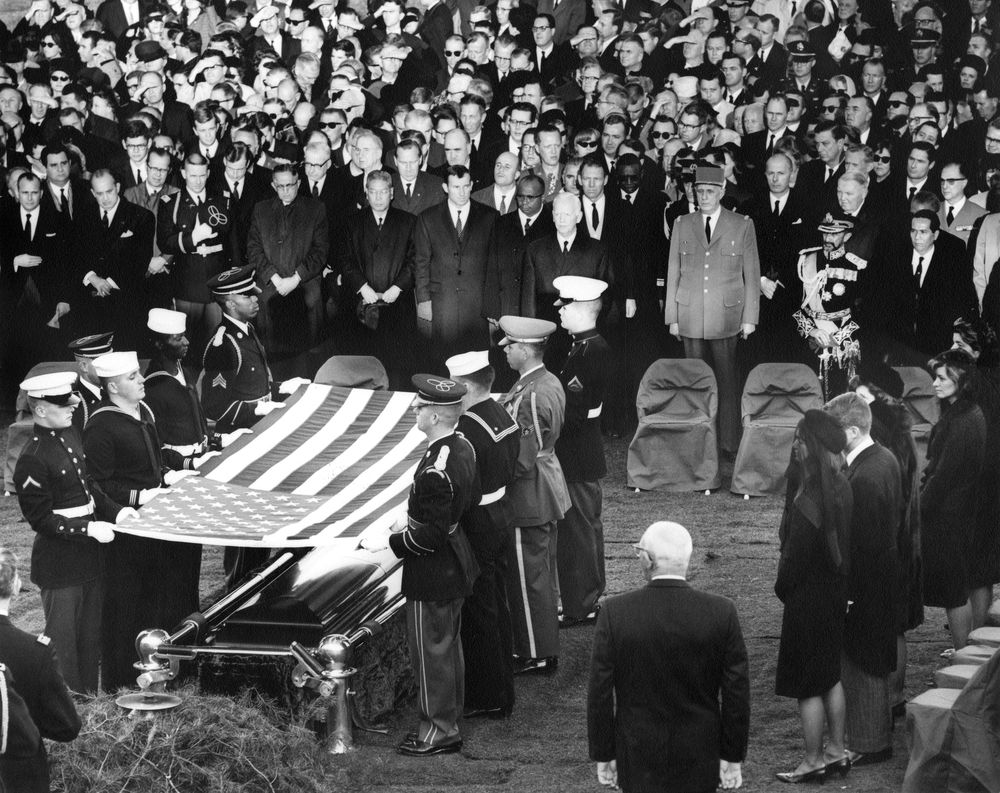
Members of the Kennedy family, officials and dignitaries attend graveside services in the state funeral of President John F. Kennedy as honor guard pallbearers lift the casket flag. Credit: Abbie Rowe. White House Photographs. John F. Kennedy Presidential Library and Museum, Boston
Who after 60 years could they possibly be trying to protect? Some of our federal government institutions? We’ve already learned we can’t completely trust them. Powerful individuals or their reputations? I say too bad. We have a right to know all the facts and see all the documents related to the events and individuals leading up to, involved in Kennedy’s assassination, and who participated in the cover up after the fact. No more soft-pedaling, no more waiting. The next president must issue an Executive Order and release the remaining documents and we the people need to make it an issue in next year’s campaign.
It’s long past time for the lies and coverup to end. It’s time we the people are provided all the facts and truth, and if some of the people are still alive, it’s time they were brought to justice because there are no statutes of limitation for capital murder – and should never be for the murder of our president.
Read MoreBy Dave Mason, Public Information Supervisor, Public Affairs, East Bay Regional Park District
After a nationwide search, the East Bay Regional Park District announces the appointment of José G. González as its new Equity Officer to lead diversity, equity, and inclusion efforts at the public agency. The East Bay Regional Park District’s mission is to preserve a rich heritage of natural and cultural resources and provide open space, parks, trails, safe and healthful recreation and environmental education. An environmental ethic guides the District in all of its activities. González begins in the role on December 18, 2023.
As the largest regional park district in the country, the park system spans Alameda and Contra Costa counties and serves an estimated 30 million visitors a year through park and trail access, visitor centers, and programs. Its workforce provides services that encompass 73 parks, 55 miles of shoreline, and over 1,300 miles of trails.
“We are pleased to share news of this pivotal role and welcome José González to help lead the East Bay Regional Park District to further strengthen its mission and impact and build upon successes as we continue to prioritize a strong, systemic approach to equity both in our workplace and services to the public,” said Sabrina B. Landreth, General Manager at the East Bay Regional Park District.
The new role will work to improve access to and use of the parks’ services for all community members and support inclusive programs, services, and public processes that reflect the tremendous diversity of our community. The position will also lead on programs and activities to help diversify our workforce, eliminate any systemic barriers to employment and promotion, and ensure equitable policies and best practices to make the agency an employer of choice as the District continuously seeks to build and retain a topnotch workforce.
“I am excited to join the East Bay Regional Park District as its inaugural Equity Officer. I look forward to bringing my experience from the local to the national level around equity in the conservation field and community in a way that showcases the opportunity and leadership that the Park District has been developing in this space for all of our community,” said González.
“Equity and inclusion begin from within, so I am thrilled and ready to support and lead the work that the Park District has prioritized for the agency to represent and reflect the diversity of its community,” added González.
González is a professional educator with training in the fields of education and conservation. He is the Founder of Latino Outdoors as well as a consultant at large. As a Partner at the Avarna Group and through his own consulting, his work focuses on Equity & Inclusion frameworks and practices in the environmental, outdoor, and conservation fields. He is also an illustrator and science communicator.
He received his B.A. at the University of California, Davis with teaching coursework at the Bilingual, Multicultural, Education Department at Sacramento State University. He received his M.S. at the University of Michigan School of Natural Resources & Environment. He serves as a board member at Parks CA and Resource Media, and as a Commissioner for the California Boating & Waterways Commission, among other leadership volunteer roles.
According to his profile on parkscalifornia.org, González is the Founder and Director Emeritus of Latino Outdoors. He is an experienced educator as a K-12 public education teacher, environmental education advisor, outdoor education instructor and coordinator, and university adjunct faculty. As a Partner in the Avarna Group and through his own consulting, his work focuses on Equity & Inclusion frameworks and practices in the environmental, outdoor, and conservation fields. He is also an illustrator and science communicator.
The East Bay Regional Park District is the largest regional park system in the nation, comprising 73 parks, 55 miles of shoreline, and over 1,300 miles of trails for hiking, biking, horseback riding, and environmental education. The Park District receives more than 25 million visits annually throughout Alameda and Contra Costa counties in the San Francisco Bay Area.
Allen D. Payton contributed to this report.
Read More
Paid for primarily by federal stimulus funds, and taxpayer-supported Measure J county sales tax and bridge toll increases
This month, the Contra Costa Transportation Authority (CCTA) commemorates Caldecott Tunnel Fourth Bore’s 10 years of service alleviating congestion on Highway 24. Caldecott’s award-winning fourth bore was constructed on time and under budget at a cost of $417 million and finally allowed two permanently dedicated tunnels to service traffic in each direction. The passage was opened to traffic on November 15, 2013, successfully reducing travel times, enhancing safety for Caltrans maintenance workers, and improving mobility for those driving from east Contra Costa County to Oakland and San Francisco.
At the time of the groundbreaking on January 22, 2010, the shovel-ready Fourth Bore was the largest American Recovery and Reinvestment Act of 2009 stimulus funding in the nation of $194.3 million, a testament to the regional importance of the project and the hard work of the project team. Contra Costa County’s Measure J provided $125 million, the Bay Area Regional Measure 2 Bridge Toll increase provided $44.8 million, and the state provided $19.9 million.
“Ten years ago, we opened the fourth bore with much anticipated fanfare,” said CCTA Chair Federal Glover. “Many drivers today don’t remember when Caltrans workers had to shift the middle bore direction at least twice a day to provide lanes for peak commuters. On some weekdays the direction of the middle bore could change up to six times, which was so inefficient for the 160,000 daily drivers who used the Caldecott each day and unsafe for the workers who were responsible for changing lanes.”
Prior to the tunnel opening, Caltrans reported westbound motorists experienced 52,585 vehicle hours of delay a month. After the fourth bore opened in 2013, the vehicle hours of delay dropped to 12,020 – a 77 percent improvement. CCTA 2023 data shows a continued reduction in delays compared to 2013 data compiled before the tunnel opened. Eastbound delays show a 42 percent reduction of vehicle hours of delay, while westbound delays show an 80 percent improvement – meaning fewer hours drivers waste sitting in traffic. (See Fourth Bore Project Fact Sheet)
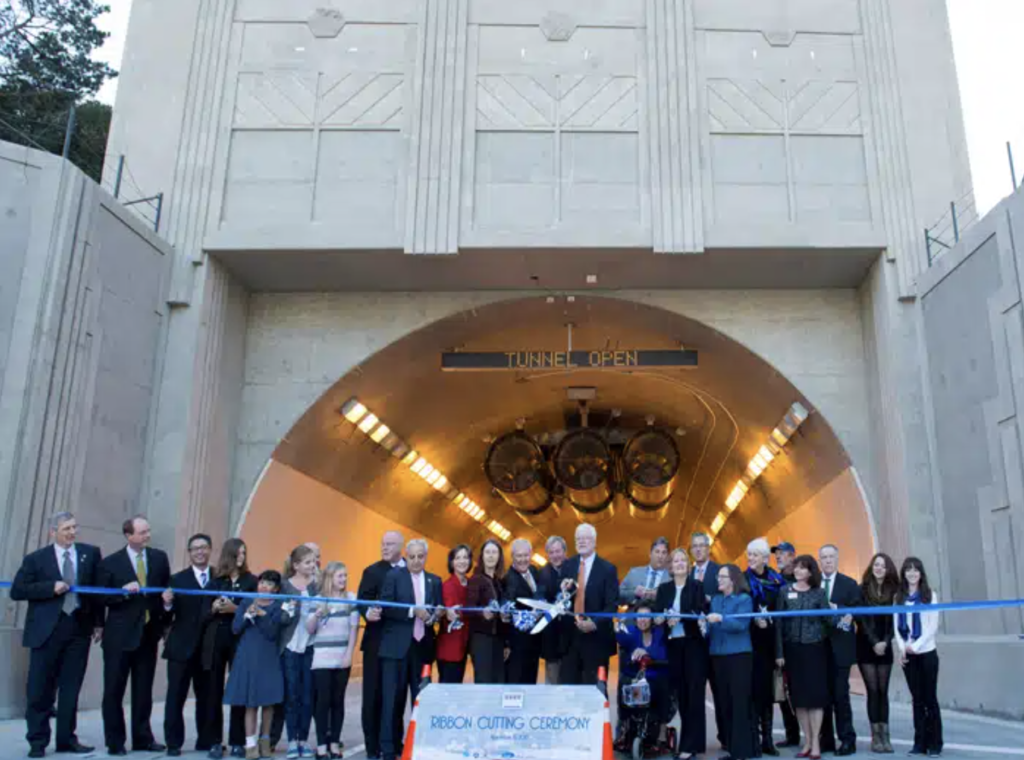
Officials and CCTA staff gather for the Caldecott Tunnel Fourth Bore ribbon cutting on Nov. 15, 2013. Photo: CCTA
“The Caldecott Tunnel Fourth Bore is a remarkable project that has served Bay Area drivers well since 2013,” CCTA Executive Director Timothy Haile stated. “CCTA’s landmark project will continue to be a legacy for decades to come.”
About the Contra Costa Transportation Authority
The Contra Costa Transportation Authority (CCTA) is a public agency formed by Contra Costa voters in 1988 to manage the county’s transportation sales tax program and oversee countywide transportation planning efforts. With a staff of twenty people managing a multi-billion-dollar suite of projects and programs, CCTA is responsible for planning, funding and delivering transportation infrastructure projects and programs throughout the County. CCTA also serves as the county’s designated Congestion Management Agency, responsible for putting programs in place to manage traffic levels. More information about CCTA is available at ccta.net.
Allen D. Payton contributed to this report.
Read More
Help Contra Costa beat Solano County to win the Big Apple trophy
By Contra Costa County District 3 Supervisor Diane Burgis
I would like to take a moment to wish you and your family a Happy Thanksgiving and invite you to participate in the annual Counties Care Holiday Food Fight to raise money for the Food Bank of Contra Costa and Solano.
Once again, in 2023 Contra Costa and Solano counties will compete to raise funds for the Food Bank. This friendly competition, spearheaded by individual county departments, has raised nearly $2.7 million since 2003. The county that raises the most funds per employee will win the Big Apple trophy. The trophy and bragging rights pass back and forth annually, but the real winners are the recipients of the funds you raise: those that go hungry in our communities. (See results from past years’ Food Fights)
Please help raise funds for the Food Bank of Contra Costa and Solano with a donation today. Every dollar donated provides enough food to make two meals. Of every dollar donated, 97 cents go toward food programs.
Counties Care Holiday Food Fight Challenge!
WHO: Contra Costa and Solano County Residents
WHAT: Counties Care Holiday Food Fight 2023
WHEN: Now through December 31, 2023
The Food Bank of Contra Costa and Solano serves one in four residents and provides more than 3,400,000 meals monthly. While the Food Bank feeds our neighbors seven days a week, the need is felt even more around Thanksgiving, when a nourishing meal is the centerpiece of the day.
As you plan your Thanksgiving menu, I hope you’ll consider our neighbors and donate to make the 2023 Holiday Food Fight a success.
To donate, click the link below or mail a check to our office.
https://give.foodbankccs.org/team/326115
Please make checks payable to: Food Bank of Contra Costa and Solano
Mail to: Office of Supervisor Diane Burgis,
Contra Costa County
3361 Walnut Blvd. Ste 140, Brentwood, CA 94513
Allen D. Payton contributed to this report.
Read MoreMembers of Knights of Columbus at St. Ignatius Church in Antioch and other volunteers will be cooking and serving
By Steve Krank, St. Vincent de Paul of Contra Costa County
St. Vincent de Paul of Contra Costa County, (SVdP) is excited to announce a collaborative effort with Loaves and Fishes of Contra Costa, the Knights of Columbus of St. Ignatius Church, and dedicated SVdP volunteers and their families to host a heartwarming free Thanksgiving luncheon and celebration on November 23, 2023.
Guests are invited to join us at the SVdP Family Resource Center, located at 1415 Simpson Court, Pittsburg, CA (Corner of Gladstone Drive). The highlight of the day will be a delectable, free, Thanksgiving meal served from 11:00 AM to 12:30 PM, featuring all the traditional favorites that embody the true spirit of Thanksgiving, turkey, stuffing, mashed potatoes, salad, pumpkin pie and more. SVdP volunteers will also be handing out warm coats and jackets, generously donated by The Burlington Coat Factory, and serving delicious hot chocolate, to help everyone feel warm, safe, and in the Holiday Spirit!
Since 2010, SVdP volunteers have been providing a delicious Thanksgiving meal to the community and a warm gathering for neighbors in need and the homeless. This collaborative effort not only provides a delicious Thanksgiving feast but also gives an opportunity for community members to come together, connect with neighbors and guests, share stories, and create lasting memories.
SVdP encourages individuals to get involved by volunteering their time or making donations to contribute to the cost of food and decorations at svdp-cc.org, “DONATE NOW”. This year, SVdP is extremely grateful to the Knights of Columbus at St. Ignatius Church. KofC members, along with other caring volunteers, will be cooking and serving the Thanksgiving meal this year.
To confirm attendance or volunteer, please RSVP by November 20, 2023, via email to: Stephen Krank at s.krank@svdp-cc.org or call 925-439-5060 #28.
St. Vincent de Paul of Contra Costa County and our partners look forward to hosting this special Thanksgiving celebration on Thursday, November 23 for community members, all are invited to join! Together, we can make this Thanksgiving meaningful and joyous for all involved.
Read MoreSmaller cities show biggest year-to-year improvements
By John Goodwin, Metropolitan Transportation Commission
Overall pavement conditions on the Bay Area’s 44,000 lane-miles of local streets and roads landed once again in fair territory last year, with the typical stretch of roadway showing serious wear and likely to require rehabilitation soon. Data released today by MTC put the region’s 2022 pavement condition index (PCI) score at 67 out of a maximum possible 100 points, as computed on a three-year moving average basis. This marks the seventh consecutive year Bay Area streets and roads have registered an average score of 67 and underscores the continuing challenges faced by city and county public works departments.
“The new pavement data continues to be a mixed bag,” commented MTC Chair and Napa County Supervisor Alfredo Pedroza. “The lack of progress toward our goal of bringing all the Bay Area’s streets and roads into a state of good repair is frustrating. At the same time, we’re encouraged that our counties and cities have been able to prevent large-scale deterioration. And the dramatic improvements seen in some of our communities, particularly those where voters have approved local taxes for street rehabilitation, show us it’s a goal that can be reached.”
PCI scores of 90 or higher are considered “excellent.” These are newly built or resurfaced streets that show little or no distress. Pavement with a PCI score in the 80 to 89 range is considered “very good” and shows only slight or moderate distress, requiring primarily preventive maintenance. The “good” category ranges from 70 to 79, while streets with PCI scores in the “fair” (60-69) range are becoming worn to the point where rehabilitation may be needed to prevent rapid deterioration. Because major repairs cost five to 10 times more than routine maintenance, these streets are at an especially critical stage. Roadways with PCI scores of 50 to 59 are deemed “at-risk,” while those with PCI scores of 25 to 49 are considered “poor.” These roads require major rehabilitation or reconstruction. Pavement with a PCI score below 25 is considered “failed.”
San Francisco, with a three-year moving average score of 74, is the only one of the Bay Area’s three largest cities to rank in the “good” category. San Jose, which has by far the largest street network in the Bay Area at nearly 4,500 lane-miles, recorded a three-year moving average score of 69. Oakland’s three-year moving average rose by two points to 54 (at-risk), but the city’s single-year score fell by one point to 57 from 58 in 2021.
The Sonoma County city of Sebastopol achieved the biggest one-year PCI gains of any Bay Area jurisdiction last year, with its 47 lane-miles of city streets registering a score of 55 (at-risk) for 2022, up 12 points from 43 (poor) the year before. Sebastopol’s three-year moving average score remains in the “poor” category at 48 points.
Other communities with big year-over-year improvements include the Santa Clara County city of Los Altos, which rose 10 points to 75 (good) last year from 65 (fair) in 2021 and the Marin County city of Larkspur, which recorded a 9-point increase to 85 (very good) from 76 (good). Larkspur as recently as 2017 registered one-year scores in the “poor” range but twice in recent years passed local sales tax measures dedicated to rehabilitating the city’s 65 lane-miles of streets. Cloverdale, Emeryville and Pacifica each registered 8-point improvements in their one-year PCI scores for 2022. Pacifica, which has long had some of the lowest average PCI ratings in the Bay Area, logged a one-year score of 49, compared to just 41 in 2021.
Five Bay Area municipalities registered three-year PCI scores in the “very good” range for the 2020-2022 period. These include Orinda (84); Cupertino and Palo Alto (83); and Brentwood, Dublin and unincorporated Solano County (80). Pavement conditions on Orinda streets were in the “at-risk” category in 2012, when voters in the Contra Costa County city approved a quarter-cent sales tax to support roadway maintenance and rehabilitation.
View the complete 2022 Pavement Conditions Summary, including percentages of local roadways in various conditions, and a listing of average PCI scores for the arterials, collector roadways and residential streets for all Bay Area counties and cities.
MTC is the regional transportation planning, financing and coordinating agency for the nine-county San Francisco Bay Area.
Read More
Calls it “anti-competitive”
OAKLAND – California Attorney General Rob Bonta today, alongside the Federal Trade Commission (FTC), filed an antitrust lawsuit in the U.S. District Court for the Northern District of California, challenging John Muir Health’s (John Muir) acquisition of Tenet Healthcare Corporation’s (Tenet) controlling interest in the for-profit San Ramon Regional Medical Center located in San Ramon in Contra Costa County. The complaint for a temporary restraining order and preliminary injunction filed today argues that the acquisition is inherently anticompetitive, and illegal under the Clayton Act. It seeks to block John Muir and Tenet from completing the proposed acquisition, under which John Muir would become the sole owner of San Ramon Regional Medical Center. In the lawsuit, Attorney General Bonta and the FTC argue the proposed acquisition illegally threatens to eliminate substantial competition between the San Ramon Regional Medical Center and John Muir’s nearby hospitals, significantly increasing consolidation in an already highly concentrated market, and leading to increased prices for patients, employers, and insurers.
“We’re in court today challenging John Muir Health’s anticompetitive acquisition of San Ramon Regional Medical Center, because when healthcare markets illegally consolidate, patients pay the price,” said Bonta. “At the California Department of Justice, ensuring that every Californian can access quality, affordable care is a top priority. Competitive markets help keep prices lower. We will continue to fight to ensure that Bay Area residents – and all Californians – can access the affordable healthcare they need to live healthy and happy lives.”
San Ramon Regional Medical Center is a 123-bed general acute care hospital located in the community of San Ramon, California along the I-680 corridor in Contra Costa County. San Ramon Regional Medical Center is currently owned by Tenet and John Muir through a joint venture. Currently, Tenet, a for-profit healthcare company is 51% majority owner of San Ramon Regional Medical Center. Its profitable strategy for San Ramon Regional Medical Center has been to charge lower prices, while offering high quality care. John Muir is a hospital system headquartered in Walnut Creek, California, which owns two general acute care hospitals north of San Ramon along the I-680 corridor: the 540-bed Walnut Creek Medical Center and the 244-bed Concord Medical Center. Both of these hospitals are located in the same geographic market as, and are direct competitors to, San Ramon Regional Medical Center. As such, John Muir’s purchase of the remaining interest in San Ramon raises significant competition concerns. A 2020 RAND study on hospital price transparency found John Muir’s Walnut Creek Medical Center was the costliest hospital in the nation from 2016 through 2018 and reporting by the New York Times stated: “John Muir Health . . . [is] the most costly system in the nation. Private insurers pay its hospitals four times what Medicare reimburses for care.”
In the lawsuit, Attorney General Bonta and the FTC argue that if John Muir were permitted to acquire San Ramon Regional Medical Center, insurers and their enrollees would have fewer alternatives for inpatient services in the I-680 corridor. As a result, John Muir would be able to demand higher rates from insurers. In turn, higher rates would likely lead to higher insurance premiums, co-pays, deductibles, and other out-of-pocket costs or reduced benefits for commercial health insurance enrollees. Furthermore, San Ramon Regional Medical Center also competes with John Muir for patients by investing to improve its quality, service offerings, and facilities. These investments, and the competition that prompts them, provide meaningful benefits to San Ramon’s patients. If allowed to move forward, the proposed acquisition would immediately eliminate this competition, reducing healthcare investment and improvement along the I-680 corridor for California residents.
A copy of the complaint is available here.
Read More
Claims proposed deal would threaten competition in I-680 corridor, leading to higher prices and reduced incentive to improve quality of care for patients; John Muir Health assessing options, issues response
The Federal Trade Commission today, Friday, Nov. 17, 2023, sued to block John Muir Health’s proposed $142.5 million deal to acquire sole ownership of San Ramon Regional Medical Center, LLC from current majority owner Tenet Healthcare Corporation, saying the deal will drive up health care costs. (See related article)
The Commission issued an administrative complaint and authorized a lawsuit in federal court alleging the proposed acquisition will eliminate head-to-head competition between John Muir Health (John Muir) and nearby San Ramon Regional Medical Center (San Ramon Medical). John Muir and San Ramon Medical operate in California’s I-680 corridor, which spans Contra Costa and Alameda Counties in the San Francisco Bay Area.
The deal would allow John Muir to demand higher rates at its two hospitals as well as San Ramon Medical for inpatient general acute care services (GAC), which are a broad range of essential medical, surgical, and diagnostic services that require an overnight hospital stay. The elimination of competition between John Muir and San Ramon Medical would also reduce incentives for these hospitals to invest in quality improvements.
“San Ramon Regional Medical Center has played an important role in ensuring Californians in the I-680 corridor have access to quality, affordable care for critical health care services, such as cardiac surgery and childbirth,” said Henry Liu, Director of the FTC’s Bureau of Competition. “John Muir’s acquisition of San Ramon Medical would increase already high health care costs in the area and threaten to stall quality improvements that help advance care for all patients.”
The FTC and the California Attorney General’s office closely cooperated throughout the investigation and will jointly file a complaint in federal district court.
John Muir Health, a non-profit corporation headquartered in Walnut Creek, California, operates two hospitals that provide inpatient GAC services along the I-680 corridor. Dallas-based Tenet operates 61 general acute care hospitals and hundreds of outpatient facilities nationally, including numerous facilities in California.
Currently, Tenet operates San Ramon Medical and holds a 51% interest in the medical center, while John Muir owns a 49% non-operating interest in San Ramon Medical. Under the terms of the proposed deal, John Muir would acquire Tenet’s remaining interest in San Ramon Medical and would become its sole owner and operator.
The complaint alleges that the proposed deal would allow John Muir to control more than 50% of the market for inpatient GAC services sold to commercial insurers and their enrollees in the I-680 corridor, eliminating competition between John Muir and San Ramon Medical to provide better services, high-quality care, and access that benefits patients in this region. Currently, San Ramon Medical is a lower-priced competitor seeking to offer inpatient GAC services in the I-680 corridor to enrollees. John Muir’s hospitals are close competitors to San Ramon Medical in terms of both patient preference and geographic location, according to the complaint. The proposed acquisition would lead to higher insurance premiums, co-pays, deductibles, and other out-of-pocket costs, or reduced benefits for commercial health insurance enrollees, the complaint alleges.
In addition to filing an administrative complaint, FTC staff will also ask a federal court to issue a temporary restraining order and preliminary injunction to prevent John Muir from taking control of San Ramon Medical pending the agency’s administrative proceeding.
The Commission vote to issue the administrative complaint and authorize staff to seek a temporary restraining order and preliminary injunction was 3-0. The federal court complaint and request for preliminary relief will be filed jointly with the California Attorney General in the U.S. District Court for the Northern District of California to halt the transaction pending an administrative proceeding. A public version of the complaint will be available and linked to this news release as soon as possible.
John Muir Health Assessing Options Following FTC Challenge of Acquisition
In response John Muir Health spokesman Ben Drew issued the following statement:
Today, John Muir Health (JMH) and Tenet Healthcare learned that the Federal Trade Commission (FTC) has decided to challenge JMH’s agreement with Tenet to acquire sole ownership of San Ramon Regional Medical Center (SRRMC). JMH has owned a 49% interest in SRRMC since 2013 and, under the proposed agreement, would acquire the remaining 51% interest from Tenet.
“We are disappointed by the FTC’s decision, and are discussing our options and next steps, including challenging the decision in court,” said Mike Thomas, president and CEO of John Muir Health. “We believe the proposed acquisition would benefit our community, caregivers and patients, as well as John Muir Health, San Ramon Regional Medical Center, and Pleasanton Diagnostic Imaging.”
For now, SRRMC will continue to operate under the current joint venture structure between JMH and Tenet with Tenet managing the operations of the hospital. Pleasanton Diagnostic Imaging (PDI), which is also part of the proposed agreement, will remain operated by United Surgical Partners International (USPI).
After announcing the agreement in January, JMH and Tenet learned in late March that the FTC intended to conduct a more in-depth review of the transaction. As part of the FTC’s review process, JMH and Tenet submitted a large volume of documents and data, as well as expert testimony on the Bay Area health care market and letters of support from local community leaders and government officials.
By acquiring SRRMC and PDI, JMH would be able to further enhance care for the community by:
- Integrating SRRMC and PDI onto JMH’s version of Epic, the electronic health record used in the health system’s inpatient and outpatient facilities and by nearly 1,000 physicians and healthcare providers throughout the community.
- Extending JMH’s quality enhancement and population health programs to SRRMC and the surrounding community.
- Making investments in facilities and enhanced services at SRRMC to reduce the number of patients leaving the community for their care.
Acquiring SRRMC is consistent with JMH’s history and would further the health system’s mission to improve the health of the communities it serves with quality and compassion. In 1997, John Muir Medical Center and Mt. Diablo Medical Center came together along with the John Muir Physician Network to create John Muir Health to better serve the community.
“We appreciate the patience of John Muir Health, San Ramon Regional Medical Center and Pleasanton Diagnostic Imaging-affiliated employees and physicians throughout this process,” continued Thomas. “Once we determine our course of action, we will communicate with all impacted audiences.”
NOTE: The Commission issues an administrative complaint when it has “reason to believe” that the law has been or is being violated, and it appears to the Commission that a proceeding is in the public interest. The issuance of the administrative complaint marks the beginning of a proceeding in which the allegations will be tried in a formal hearing before an administrative law judge.
The Federal Trade Commission works to promote competition, and protect and educate consumers. You can learn more about how competition benefits consumers or file an antitrust complaint.
Allen D. Payton contributed to this report.
Read More
All entrance activity fees waived in East Bay Regional Parks
By Dave Mason, Public Information Supervisor, Public Affairs, East Bay Regional Park District
Thursday, November 16, 2023 (Oakland, CA) – Celebrate Green Friday, November 24, with an East Bay Regional Parks FREE Park Day. Green Friday provides healthy and fun ways to enjoy the day after Thanksgiving with family and friends.
On Green Friday, all entrance activity fees are waived in Regional Parks, including parking, dogs, horses, boat launching, and fishing, as well as entrance to Ardenwood Historic Farm. The fee waiver does not include state fees for fishing licenses and watercraft inspections or concessions, such as the Tilden Merry-Go-Round and Redwood Valley Railway steam train.
For the past nine years, the East Bay Regional Park District has celebrated Green Friday to encourage the public to spend time in nature.
Green Friday activities in Regional Parks include:
Hike It Off, 9:00 a.m. – Reinhardt Redwood, Oakland
Fall Scavenger Hunt, 9:00 a.m. – Sunol, Sunol
Green Friday Hike, 10:00 a.m. – Del Valle, Livermore
History Hike ABOVE the Mines!, 10:00 a.m. – Black Diamond Mines, Antioch
Farm Chores for Kids, 10:30 a.m. – Ardenwood, Fremont
Meet The Bunnies, 11:30 a.m. – Ardenwood, Fremont
Stilts, 1:30 p.m. – Ardenwood, Fremont
Woodland Wonderland, 3:30 p.m. – Del Valle, Livermore
For more information about Green Friday, visit www.ebparks.org/green-friday.
The East Bay Regional Park District is the largest regional park system in the nation, comprising 73 parks, 55 miles of shoreline, and over 1,300 miles of trails for hiking, biking, horseback riding, and environmental education. The Park District receives more than 25 million visits annually throughout Alameda and Contra Costa counties in the San Francisco Bay Area.
Read MoreClaims typical residential customer will pay $32.62 more for combined monthly electric and natural gas bill beginning January 1, 2024.
By CPUC
The California Public Utilities Commission (CPUC) on Thursday, Nov. 16, 2023, resolved Pacific Gas and Electric Company’s (PG&E) General Rate Case (GRC), which covers its operational and infrastructure revenue requirement for 2023-2026. The decision marks a crucial step in fortifying the future of California’s electric grid while prioritizing customer affordability.
Based on the evidence presented, the CPUC today unanimously approved the Alternate Proposed Decision of Commissioner John Reynolds. This decision approves investments in the safety and reliability of PG&E’s energy services. Inflation and a significant investment in undergrounding electric lines ranked among the top drivers in PG&E’s request. Over the past year and a half, numerous parties reviewed PG&E’s GRC request and provided input on each cost category and related proposed expenditures.
“I am proud of today’s decision because it represents the CPUC’s commitment to finding a reasonable balance in the face of incredibly challenging circumstances and competing objectives,” said Commissioner John Reynolds, who is assigned to the proceeding. “This decision ultimately represents both an historic investment in PG&E’s electric and natural gas systems as well as an expectation that PG&E must continue to be safer and more efficient. I am grateful to the many parties, and the scores of CPUC staffers, for their help as we grappled with this decision.”
Today’s decision propels PG&E’s energy infrastructure and operations into the future, addressing critical objectives such as mitigating wildfire risk, enhancing safety and reliability, and anticipating evolving electric grid demands. This comprehensive approach not only ensures PG&E’s capacity to maintain a safe and reliable energy system with a dedicated workforce, but also positions California for a more resilient energy future in the face of climate change. Moreover, the decision reflects rigorous oversight over hundreds of programs, and reduces PG&E’s request to more accurately reflect forecasts for prudent use of ratepayer funds.
Among the key initiatives covered in the decision:
- Wildfire System Enhancement and Undergrounding
- Approves 1,230 miles of electric line undergrounding, as well as 778 miles of covered conductor, totaling 2,008 hardened miles. This represents an historic opportunity for PG&E to invest in safer, reliable improvements for its customers while also achieving economies of scale to drive down costs; the revised undergrounding total also provides PG&E with a bridge to a future phase of undergrounding planning, through the Senate Bill 884 program.
- Vegetation Management
- Approves PG&E investing approximately $1.3 billion in vegetation management to reduce wildfire ignition risk and improve reliability on PG&E’s electrical system.
- Capacity Upgrades
- Approves PG&E investing more than $2.5 billion in upgrading the electric distribution system from 2023-2026, which will help prepare the grid to support initiatives for enhanced building electrification and new interconnections for electric vehicle charging stations and new housing and businesses.
“Today’s decision balances a myriad of competing interests—affordability, feasibility, safety, and reliability,” said CPUC President Alice Reynolds. “And in the face of increasingly turbulent climate-driven weather events, it gives PG&E the opportunity to prove it can underground electric lines at scale. This will allow PG&E to achieve economies of scale, drive down costs, and reduce wildfire risk.”
Setting the pathway for critical investments in PG&E’s system
For PG&E customers, this approval by the CPUC translates to a continued commitment to safe, reliable, and affordable energy services. The GRC ensures that every dollar invested contributes to more resilient energy infrastructure, offering customers lasting benefits. Moreover, stringent accountability measures are embedded within the decision, assuring customers that their investment yields tangible and accountable improvements in PG&E’s operations and services.
PG&E requested $15.4 billion for 2023; Thursday’s decision cut that amount substantially, by $1.8 billion. Today’s decision sets the 2023 revenue requirement at $13.5 billion, reflecting an 11 percent increase from the authorized 2022 revenue requirement. For the typical residential customer, their combined monthly electric and natural gas bill will increase by $32.62 or 12.8 percent, compared to PG&E’s request of $38.73 or 17.9 percent increase.
| PG&E’s 2022 Authorized Revenue Requirement | Proposed 2023 Revenue Requirement |
Percent Increase | Dollar Increase | |
| $12.2 billion | PG&E Request | $15.4 billion | 26% | $3.2 billion |
| Decision | $13.5 billion | 11% | $1.3 billion |
Customers can expect any changes to their bill to go into effect on January 1, 2024.
For further information on the proceeding, including today’s decision and a fact sheet, please visit the CPUC’s website.
About the California Public Utilities Commission
The CPUC regulates services and utilities, protects consumers, safeguards the environment, and assures Californians access to safe and reliable utility infrastructure and services. Visit www.cpuc.ca.gov for more information.
Read More







